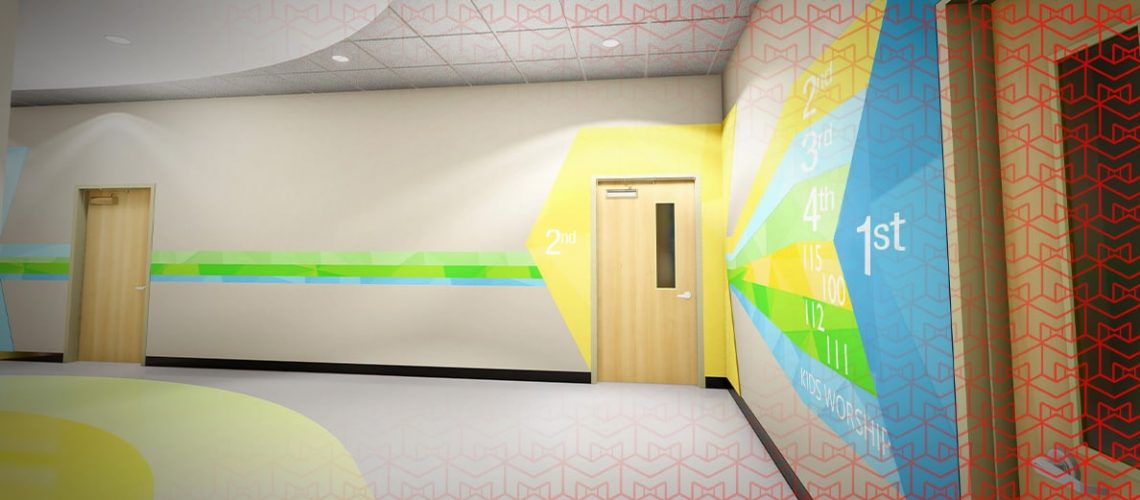I have seen families walk into a church lobby, try to find their way around, and then, after failing, turn around and leave. As a pastor for years, my family and I have visited many churches. I have stood in front of various directional, wayfaring signs, whose goal was to point each new guest to great teaching & fellowship. I have found myself lost in church buildings, following said signs. I have also seen many families awkwardly bring their whole gang into the first adult Sunday School or small group they could find because they didn’t know if their kids were “Thrivers”, “Shiners”, “Growers”, or where “right of the old fellowship hall, down past the room where Gary was scared by the Youth Pastor that one night” is supposed to be. Unlike these misguided attempts to guide new guests, navigation apps (such as Google Maps, Apple Maps, Waze, or your navigational app of choice) have most church wayfaring signage beat in this area of compassion hands down. These nav apps make us feel safe to take a road trip in ways past methods just couldn’t touch. They make life better. It, in its own digital way, is a form of compassion: caring for the app user’s well-being on journeys that can be new and difficult. It’s a form of compassion that churches can give to their guests with the addition of supportive signage.
Now, you may say, “But Dwayne, we have an engaging welcome team, welcome center and free coffee. How can an impersonal map app outdo that?” Those welcome teams and warm beverages are great at connecting to those who have been visiting your church for a while and are looking to settle in and get plugged in. But for first or “first-of-a-few” time guests, these visitors are usually not looking to start a relationship with your church just let. They are just in the ”getting to know you” phase. Most people today want to look around for themselves; feel things out before they engage with people. They often don’t want to be asked “What brings you here today?”. They may not be sure why exactly, or maybe they’re trying to keep a low profile because they are thinking of changing church families, etc. These new guests are the folks for which we can learn a couple of lessons from the navigation apps. How to show them real, understanding compassion as they enter a new, strange-to-them environment. That’s where the nav apps often out compassion the church. So, let’s observe two ways nav apps show compassion well.
2 Ways Navigation Apps Show Compassion To Their Users
1. They BOOST their user’s CONFIDENCE that the user can get where they want to go.
2. They LESSEN their user’s ANXIETY by filtering information to what they need only when they need it.
2 Components Of Signage That Bring Compassion To Guests At Your Church Like The Navigation Apps
1. Wayfaring Signage should be SPECIFIC (for Boosting Guest Confidence)
2. Wayfaring Signage should GUIDE (for Lessening Guest Anxiety)
Number #1: SPECIFIC Wayfaring Signage
It’s interesting how nav apps use a universal language most users understand automatically. A colored line to follow, turn arrows, basic names for locations, etc. This allows the app to be functional for most people without any learning curve. This should be the goal for your church wayfaring signage. It should look at the layout of your building from the point of view of a new guest. A new guest doesn’t know what a room or wing of the building used to be, nor do they understand the lingo and branding your church may use. So, the signage needs to give them the information in universal, easy to understand terms. For example: if your Middle School program meets down the right hallway, have the arrow pointing that direction say Middle School Students (if that term is used the same way by all the schools in your area for the same grades of students) or more specifically, 7th-8th Grade, etc. This type of signage allows guest to know exactly who goes where without having to track down the most informed looking individual they can find. If your Middle School is branded (ie: Thrive! ), that labeling alone would be confusing to a guest, so if you want to put it on the sign do so, but after the larger 7th-8th Grade lettering. This also allows members of your church to understand which groups/programs are which as well. (In my experience, many folks only remember the name of a group or program if they or a family member have regular interaction with it, no matter how good your PR is.) Make your signage as clear and specific as you can.
Number #2: GUIDING Wayfaring Signage
Compassionate signage guides guests to their destination by limiting the information given until it is needed. This may at first glance seem to contradict the first component given, but in fact, they need to work in harmony to lessen guest anxiety. You may have come across church signage before that is trying to be specific, but has so much information listed that it reads like the departure board at an airport. Remember, the goal is to help guests find their way, so only list what is needed from that specific location. For example, if your church building has a kids wing or hall, then a simple listing of “Kids (K-5th)” with a corresponding directional indicator would be sufficient from the main lobby. Then, as families move down the hall, have signs that give more specific information that points to where the individual children should go (based on age, etc.). This makes your signage easy to understand and eases the anxiety guests feel when they are not sure they have go the right way or have to fight their way back upstream from making a wrong turn. Additional Note: Leave non-regular use locations (ie: Fellowship Hall, Library, etc) & any room numbers off your main/lobby wayfaring signage. It helps declutter the signs, makes the more regularly needed locations (Worship Center, Nursery, etc) easy to find and, let’s face it, nobody remembers which room is Room 236 anyway.
As we enter the Holiday Season, you will probably be spending a lot of time, effort, energy, and resources on various programs, pageants, plays, and other Thanksgiving & Christmas activities that start with the letter “p”. (like pies!) But please, take a moment to consider the simple act of compassion that specific and guiding signage can bring to those new to your church this joyous season. This year (and for years to come), it’s time to out compassion an app. Remember, compassion is right over there -> (down the hall, to the left, just past Room 236… you can’t miss it!)
– Dwayne Sheridan
(“retired” Youth Pastor of 20 years)



